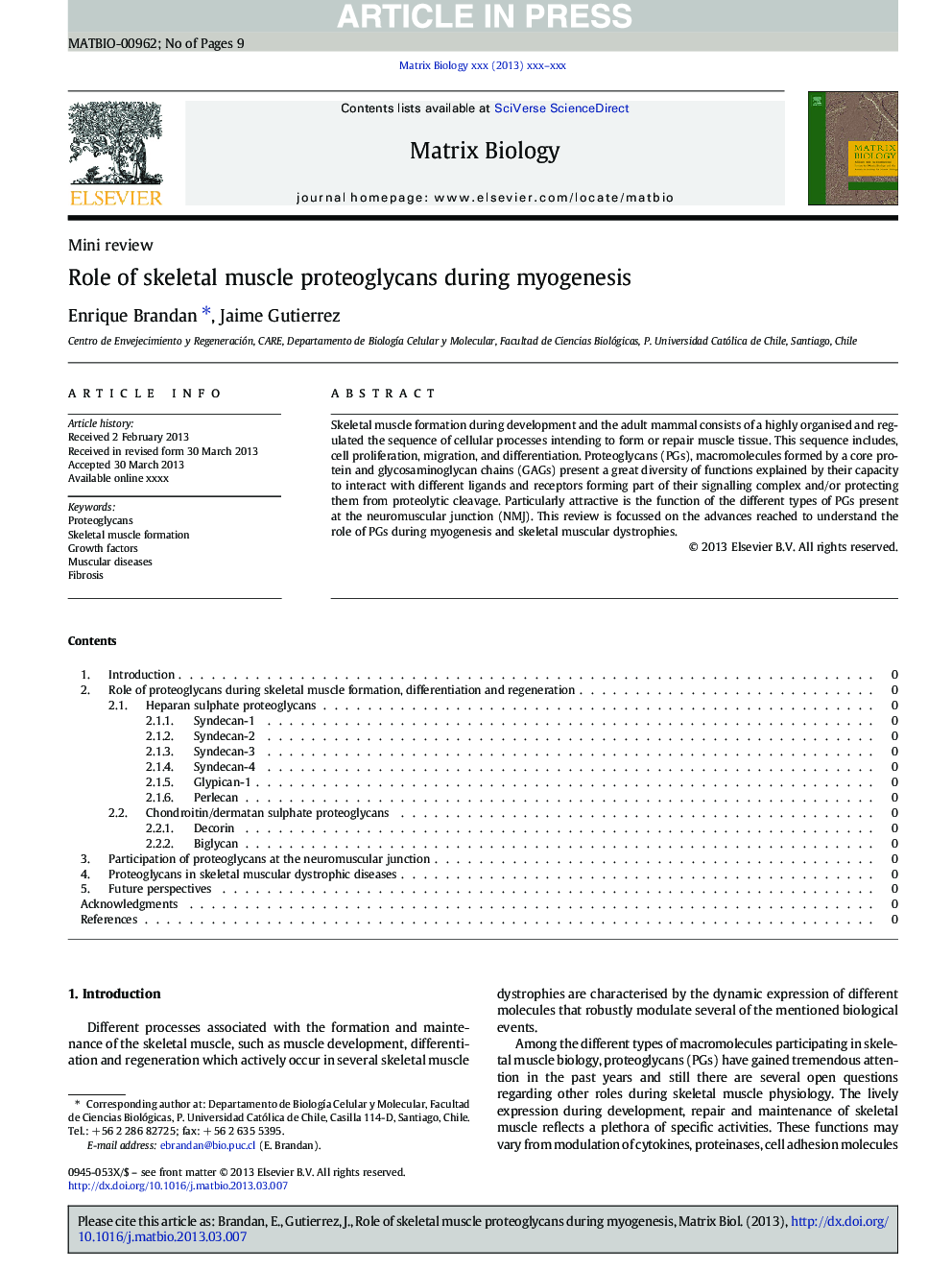| Article ID | Journal | Published Year | Pages | File Type |
|---|---|---|---|---|
| 10913806 | Matrix Biology | 2013 | 9 Pages |
Abstract
Skeletal muscle formation during development and the adult mammal consists of a highly organised and regulated the sequence of cellular processes intending to form or repair muscle tissue. This sequence includes, cell proliferation, migration, and differentiation. Proteoglycans (PGs), macromolecules formed by a core protein and glycosaminoglycan chains (GAGs) present a great diversity of functions explained by their capacity to interact with different ligands and receptors forming part of their signalling complex and/or protecting them from proteolytic cleavage. Particularly attractive is the function of the different types of PGs present at the neuromuscular junction (NMJ). This review is focussed on the advances reached to understand the role of PGs during myogenesis and skeletal muscular dystrophies.
Related Topics
Life Sciences
Biochemistry, Genetics and Molecular Biology
Cancer Research
Authors
Enrique Brandan, Jaime Gutierrez,
